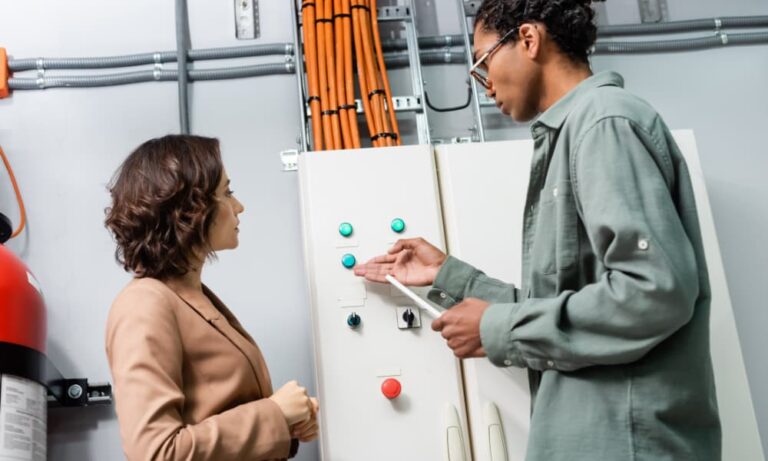Aging building systems might seem like a minor inconvenience, but they can silently drain your budget through rising energy costs, frequent repairs, and unexpected breakdowns. Discover how to improve efficiency and reduce expenses without needing a complete replacement.

Did you know commercial buildings waste 30% of the energy they consume? This is especially true for those constructed before the 2000s because they still rely on decades-old mechanical and electrical systems designed when energy efficiency wasn’t a priority.
Aging building systems waste energy, which translates to higher utility bills. They also require frequent maintenance, potentially resulting in revenue loss if the issue disrupts business operations.
So, is replacement a viable option?
That may seem like the perfect solution, but replacing an entire mechanical system can be costly. There are smarter, cost-effective alternatives to bring aging systems up to speed, however – and while cutting expenses in the long run.
Let’s explore the hidden costs of aging building systems, plus practical, cost-effective solutions to boost efficiency and cut expenses without a complete system overhaul.
The Infrastructure Lifecycle & Why Complete Replacement Isn’t Always Necessary
Building systems go through different lifecycle stages. New ones run smoothly with minimal maintenance, but efficiency declines, repairs become more frequent, and energy consumption increases over time:
- Recent estimates show that HVAC systems lose their efficiency after just 15 years.
- By 30 years, many are well past their prime.
- Older fluorescent and incandescent fixtures use far more energy than modern LEDs, and their components degrade over time.
The typical assumption is to consider a replacement when businesses realize their building systems are aging. Full system replacements can be necessary if equipment is beyond repair, but targeted automation upgrades can significantly improve performance at a fraction of the cost.
Targeted automation can extend the life of your infrastructure, reduce costs, and improve efficiency, all without the hefty price tag of a complete overhaul. Investing in these solutions today can help you avoid costly breakdowns and keep your building running smoothly for years.
Building automation solutions that reduce costs
Cutting building costs doesn’t always mean investing in significant innovations. The right building automation solutions can cut costs, improve efficiency, and extend the life of your existing systems.
Let’s look at some of the most innovative ideas you can implement today.
- Smart HVAC controls
Heating and cooling costs significantly impact hotel and apartment complex budgets. That’s where smart HVAC controls come into play. These advanced systems can adjust temperature settings based on real-time occupancy and weather conditions, preventing energy waste in unoccupied rooms while maintaining optimal comfort. Smart HVAC controls can lower energy consumption by up to 30%, according to Sengreen, making this one of the most impactful upgrades for reducing operating costs. - Predictive maintenance & remote monitoring
Nothing’s worse than a major failure that shuts down operations and leads to expensive emergency repairs. Predictive maintenance technology uses sensors and data analytics to detect problems before they spiral out of control. Unexpected equipment failures can be reduced by up to 70% and maintenance costs by 30% when inefficiencies are caught early. This not only saves money but also minimizes downtime and disruptions. - Lighting automation & occupancy-based controls
Leaving the lights on in empty rooms is one of the simplest ways buildings waste energy. They can address this by utilizing lighting automation and occupancy-based controls, which automatically adjust lighting levels based on real-time usage. Installing motion sensors, daylight harvesting systems, and automated dimmers will ensure lights only stay on when needed. - Energy management software
Facility managers often struggle to pinpoint where energy is being wasted. Energy management software provides real-time data on consumption, allowing businesses to track usage patterns, identify inefficiencies, and make adjustments to improve performance. A large office building using energy management software might discover its HVAC system running at full capacity over the night, for example. With this insight, facility managers can reprogram schedules to optimize energy use.
Industry-specific benefits
Different industries face unique challenges in managing costs, system reliability, and operational efficiency. Here’s how smart building automation provides tailored benefits:
- Hotels: improve comfort while cutting costs
Guests expect a comfortable stay from the moment they check in. Smart automation adjusts temperatures based on real-time occupancy, ensuring comfort when needed and energy savings when rooms are empty. This not only improves guest experiences but also lowers HVAC costs.
- Data centers: prevent downtime and overheating
Servers have to run 24/7, so data centers consume massive amounts of power. Even minor cooling failures can lead to catastrophic outages. Automated power and cooling management ensures optimal conditions, reducing the risk of overheating and system failures.
- Engineering firms: smarter designs for lasting infrastructure
Automation allows firms to retrofit existing systems with intelligent controls, extending asset life, improving efficiency, and meeting evolving sustainability standards. This helps firms design more resilient, future-ready infrastructure while keeping projects within budget.
- Mechanical contractors: more value, more revenue
Automation-driven upgrades can help businesses lower energy consumption while securing long-term service contracts. These smart retrofits provide value to clients and open new revenue streams for contractors looking to stay competitive.
Is Your Building Costing You More Than It Should?
Aging building systems lead to rising energy bills, frequent breakdowns, and expensive emergency repairs, ultimately affecting your bottom line. The longer these issues go unaddressed, the more they drain your budget and disrupt daily operations.
But you can change that with EnergyIQ’s smarter solutions. Our cutting-edge automation technology helps businesses reduce energy waste, prevent costly breakdowns, and improve system reliability—all while maximizing efficiency and extending the lifespan of existing infrastructure.
Whether it’s smart HVAC controls, predictive maintenance, or energy management software, we provide tailored advanced energy solutions to fit your needs and budget. Contact EnergyIQ today to schedule a consultation today.



